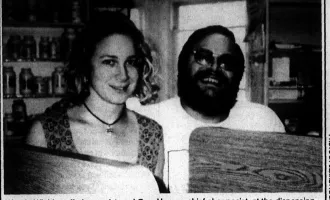
Career Do's and Don'ts
Do you ever feel guilty considering a job in industry?
For students studying for their PhD or MD, this can feel like cheating on your beloved. However, there are many companies in the life sciences and in medical research with lofty goals not so far from academia or medicine.
But how do you evaluate companies to see where your dream job is? And how do you nail the application and interview to get the position?
On Dec. 5, Johnson & Johnson and its startup incubator JLABS presented Life Sciences Talent Summit at Stanford University.
The event, hosted by the UCSF Entrepreneurship Center and Stanford University, brought together industry representatives of life sciences companies big and small to discuss how they are trying to attract talent as well as how applicants can stand out.
A panel with recruiters from Genentech, Johnson & Johnson, and small start-ups spoke about how to find the right fit in a company and how to impress that company when you are applying.
Another panel spoke about the current hiring climate for the life sciences, with representatives from places like LinkedIn explaining how their companies can guide graduates to their next job online.
Here are seven do's and don’ts covered by the discussion:
DO look for a company with culture and values that fit you.
The panelists discussed how job seekers can scrutinize a company’s corporate values to understand the company culture better.
Sometimes these are stated on a company website. (If you didn’t know, UCSF’s five core values are Professionalism, Respect, Integrity, Diversity and Excellence.)
Marlena Jackson, Diversity Talent Partner at Genentech, said that if things like diversity and inclusion are important issues, interviewees can also ask a hiring manager outright how these are addressed in the company.
“Any hiring manager should be able to answer that, and if there’s stumbling around the topic, that will make you wonder,” she said.
DON’T limit your options.
Prithvi Ramakrishnan of Piazza said that your ideal role might be outside the field of your work experience or what you studied in school.
“We’re seeing a blurring of boundaries between industries,” he said, advising that applicants remain open minded.
Kaylynn Callister, Head of Human Resources in Digital Surgery at Johnson & Johnson, was part of a startup that was acquired by Johnson & Johnson.
“I thought they just made bandaids,” she said, and only later did she find out her company has more than 250 locations and many specialties.
DO hone your soft skills.
Sharon English Hebrok, Senior Director of Human Resources at the company Mission Bio, spoke about making great first impressions during each interaction with a potential employer, starting with the resume.
“Your life’s in that piece of paper, and someone’s looking at it for six seconds,” she said.
Hebrok added that soft skills like shaking hands, making eye contact, and emailing a thank you after interviews are still essential. It can even make or break an application.
“Someone interviewing with a CEO didn’t stand to shake hands when the CEO came in,” she said, “and that person didn’t get the job.”
DON’T rely solely on job postings
The panelists were adamant that it is important to build an online professional presence with something like LinkedIn.
However, putting up a profile is not enough. Sankar Venkatraman, Chief Evangelist at LinkedIn, said that today you are nine times more likely to have mutual connections with the person who gets you a job.
With employees being compensated sums like $3,000 for successful referrals, or even $10,000 in some niche fields, people may also be open to referring you for a position.
Callister said that the best person to ask for an introduction is often a second- or third-degree connection.
These people have less at risk personally, while still feeling some connection to you.
DON’T just recite your past work experience at an interview.
The interviewer is probably more interested in hearing how you might fit into their open position than the half dozen jobs you’ve held in the past.
“I want to know what you will do in the future,” Hebrok said.
Unless you can frame your past work in terms of how it will enable you to excel at the new job, you don’t need to bring it up.
DO dress the part.
For a job applicant, this is one area where you don’t want to stand out from the crowd.
Tara Kochis-Stach, president of Slone Partners, told a story about a candidate who showed up to an interview wearing flip-flops and said they were going on vacation directly after the interview so they wanted to be in “ready-go mode.”
“That never plays as well as you think it’s going to,” Kochis-Stach said.
On the other hand, she says it also raises eyebrows when a person interviewing at a Silicon Valley startup comes in a full suit and tie.
When in question, it’s okay to simply ask.
Marlena Jackson, diversity recruiter at Genentech, said that it’s fine to ask what the etiquette is for a particular workplace.
Thursday’s event ended with an upbeat forecast for the job market.
John Radford, founder of the job compensation consulting company Aon Rewards Solutions, pointed to evidence that life science companies today are trying to grow rapidly.
Meanwhile, tech companies like Google are also starting to compete for talent as they expand into life science ventures.
Companies are offering more benefits to hires in order to attract talent that is suddenly more scarce.
“It’s the hottest job market in the history of life sciences in the Bay Area,” he said.


